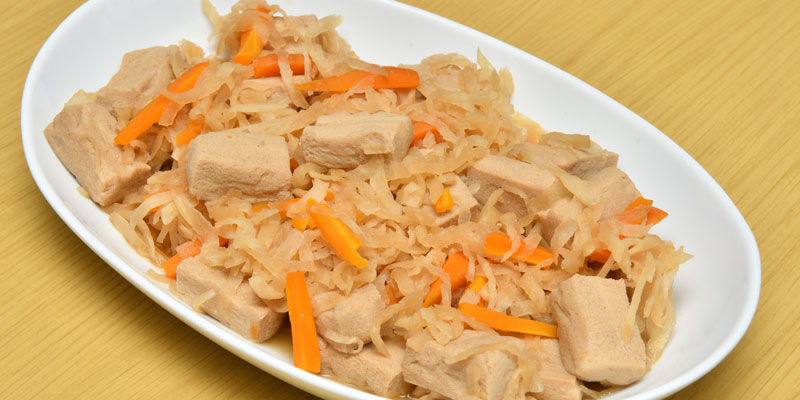Better Websites to own 2025
Jun 11, 2025

Ever wondered which is healthier freeze dried or dehydrated? We’ll take a look at how each food items fair between the two. Hopefully, this information we’ll give you will help you make a better decision when it comes to preserving food.
Before we move on, let’s talk about first the difference between dehydrating and freeze-drying. Both use high temperatures, yes, but they are polar opposites.
Food dehydration involves using temperatures between 95°F-155°F (35°C-68°C). This is to help speed up water evaporation, effectively drying up food in a shorter period. But this prolonged exposure to high temperatures “cooks” your food. That’s why you get this brownish, wrinkly end product. Food also becomes leathery, such as the case with beef jerky.
On the other hand, freeze-drying removes moisture from food at -40°F (-40°C). It may seem incredible, but it does happen. All because freeze dryers have pressure chambers that force water to sublimate – change from ice to gas without passing through the water stage. Because of the cold temperature and cold “drying” process, food remains close to its original state in appearance, color, and flavor. The only difference is it’s dry, crumbly, light, and has a melt-in-your-mouth consistency.

Fruits are great when you eat them raw and on their peak ripeness during their best seasons. Most even taste better cold. And since nature intended that you eat fruits raw, their vitamins and nutrients are more stable in lower temperatures.
When you dehydrate fruits, you expose them to temperatures of 135°F (57°C). This doesn’t change fruits’ calorie, carbohydrate, sugar, and fiber content. However, this can reduce or ruin Vitamins A and C. Depending on the process, you can also reduce B vitamins and certain minerals.
There are also essential enzymes in fruits like pineapple, papaya, banana, mango, avocado, and kiwi. These enzymes help aid in digestion and improve the absorption of vitamins and nutrients. Unfortunately, these enzymes are heat sensitive and get deactivated quickly when exposed to heat. Most enzymes “shut down” when exposed to over 117°F (47°C).
For freeze-dried fruits, you have less of a problem with vitamin and enzyme deficiency compared. Because of the low temperature, the vitamins and nutrients remain intact and ready for your body.
Dehydrating vegetables vary in temperature. Herbs go under the heat of 95°F, mushrooms at 100°F and vegetables generally go for 125°F. Some studies show heat increases the availability of antioxidants such as beta-carotene and lutein. Beta-carotene is an essential source of Vitamin A for the body. Aside from that, a beta-carotene-rich diet helps reduce the risk of heart disease.
Still, there’s the presence of heat in dehydration, which harms the strength and effectiveness of a number of vitamins and nutrients. Nutrient degradation generally starts at temperatures greater than 120°F
Dehydrating meat and fish expose them to temperatures 155°F (68°C). This doesn’t destroy proteins and fats, which are their primary macronutrient. However, thiamine (B1) and pantothenic acid are sensitive to heat. This means you lose some of the nutritional content in these two proteins.
Freeze drying, on the other hand, keeps most of these nutrients intact. But, of course, this means you’ll lose some nutrients if you pre-cooked your food before freeze drying or will be cooking the food after.

Which is healthier freeze dried or dehydrated? Unfortunately, there are still no scholarly articles that can objectively answer that question.
True that dehydrating food causes them to lose 60% of their nutritional value. This is because most nutrients are heat-sensitive. They can degrade when exposed to high temperatures, so you’ll end up with food with less nutrition. But, it’s the same thing with cooking. We cook most of our food to make them taste better and easier to eat. For dehydration, we do this to help our food last longer before we eat or cook them.
On the other hand, freeze drying can preserve 90% of food’s nutritional value. For one, there’s no high heat. This is because freeze-drying uses the process of sublimation. This changes solid ice into water vapor without passing the liquid phase. This is by exposing food to freezing temperatures and then to a higher temperature under pressure.
For a solid comparison, most dehydrators operate at 95°F-165°F, but some are pre-set to 125°F-165°F. Freeze dryers operate at temperatures -40°F (-40°C) or colder to 30°F (-1°C). From this, you can see that freeze drying is more capable of preserving nutrients, minerals, and essential enzymes in food.
It all boils down to how often you will eat dehydrated freeze-dried food and how you will eat it. Both don’t have much water in them, so be mindful of drinking more water when eating.
Also, as long as your preserved food doesn’t contain any additives or artificial enhancements, you can eat them without any worries. If you have your own freeze dryer, you don’t have to worry because you know firsthand what goes into your food. If you’re buying from other brands, make sure that they meet your health and diet requirements. Always read the label to check if the freeze-dried food is the right fit for you.
How about you? Which is healthier freeze dried or dehydrated? Share your thoughts, ideas, and experience in our comment section!
Also, if you haven’t yet, don’t forget to subscribe to Freeze Dried Guide YouTube Channel! We’re cooking up exciting guides, tips, tricks, and info that will make your freeze-drying journey even better.